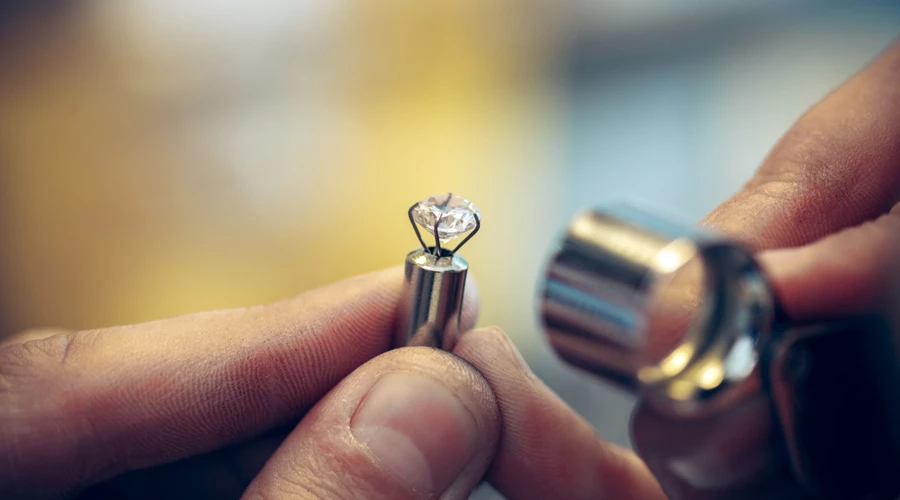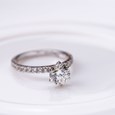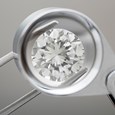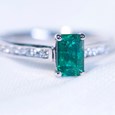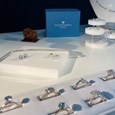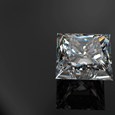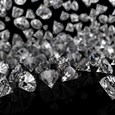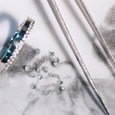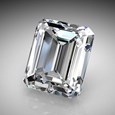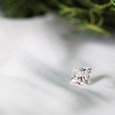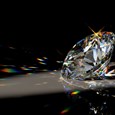Sign up for our Newsletter
How Much Would a 2 Carat Diamond Cost?
September 20 2023
So you’re looking for a diamond and you've got your carats covered. But you’re surely wondering, how much will a 2-carat diamond cost?
Well, the answer to that is the ever-frustrating “How long is a piece of string?” - although in this case, your piece of string is sparkly, gorgeous and sure to make people jealous!
While the number of carats reflects the weight of your diamond, there’s still a great deal that can influence the price. Diamonds are all about the Four C’s - something you’re bound to run into if you’re looking at buying one.
Even though you may well know how many carats you’re after, you've still got those other pesky C’s to think about too: Cut, Colour, Clarity. How does it all affect the cost?
Carat Weight
You’re considering a 2-carat diamond. But what does that really mean?
Simply put, the carat is the weight. It roughly equates to size (although carat weight isn’t a reliable indicator of size, for reasons we won’t get into here). Obviously, bigger diamonds are harder to find and so command a higher price.
One carat is 200 milligrams, easily divisible so there are one hundred points of 2 mg each. When you hear a diamond referred to in points, that’s just another way of breaking down the carat. So, if you can see past the sparkle, a 2-carat diamond is 200 points - or 400 milligrams. Except that’s just boring numbers, and diamonds are about a bit more than that.
But wait, I sort of like numbers!
You do? So do a lot of people. So much so, that you’ll find a nice round-numbered 2-carat diamond will cost you a lot more than a 1.95-carat diamond - even though there’s hardly any visible difference between them. Everyone likes a nice round number it seems. But what about how round your diamond is?
But, before we move on… Here’s an example of two diamonds with very similar grades but drastically different prices.
Diamond 1
- Round Brilliant
- 1.92 carats
- G colour
- VVS1 clarity
- Certified by GIA
- 9.38 DiamondScore
£22,260
Diamond 2
- Round Brilliant
- 2 carats
- G colour
- VVS1 clarity
- Certified by GIA
- 9.35 DiamondScore
£28,340
That's over £6,000 difference, just for 0.08ct in weight! You definitely won't see any difference with the naked eye... trust me, it just isn't possible (for the inquisitive amongst you, it's one-tenth of a millimetre difference).
Cut Grade
It’s a little less mathematical here, and all about how to make that diamond shine.
What you want is a beautifully cut diamond, one that just demands to sit on your finger - where every facet has been carefully angled to reflect, refract and radiate light. The best-cut diamonds make such great use of light that they give off that tell-tale sparkle even in the dimest room.
When it comes down to it, cut is the thing that really makes a diamond special - and it has an enormous influence on the price. So although opting for the highest possible cut grade will mean you’ll be paying more for your diamond, it’s still the best thing to splurge on. If there’s one C you really want to be certain of, it’s the cut grade - that’s where the sparkles come from.
If you find a couple of similar diamonds and want a shortcut to the best diamond, just check the DiamondScore, which takes into account the same attributes as the cut grade, but gives a score out of 10, which is more refined.
So is a diamond cut the same as the diamond shape?
Not quite, as if all those C’s weren't confusing enough! The shape just describes the form of a diamond after all the technical magic to make it shine has been done. So ‘shape’ means exactly what a preschooler would expect it to. The cut is about how well a diamond is turned into that shape.
Professional diamond cutters know the best way to cut a stone to make it sing, so whether you want a sparkling Round Brilliant or a dazzling Oval, a well-cut diamond will always shine. Most of the price influence on the shape itself is down to supply and demand - for example, a popular shape increasing in price due to high demand or a less popular shape that’s simply in short supply as a result. A high-quality cut, on the other hand, is always worth more.
It’s worth noting that only Round Brilliant Diamonds are given a cut grade, whereas we give a DiamondScore to all diamond shapes.
Colour Grade
So colour would seem straightforward enough, and indeed it’s perhaps the easiest of the Four C’s to understand.
Diamonds can vary in colour, from the much sought-after colourless stone to a yellow, almost brown tint. As is often the case we judge everything by the best, so the scale for colour is based on the rarer, colourless diamonds. Even a tiny hint of colour can dramatically decrease the price.
The diamond grading for colour goes from a colourless D and E all the way to the tint of an S-Z. As most people expect a diamond to be sparkling white, stones in the lower colour range tend not to be as popular or as desirable. That does however mean they cost a great deal less. We’d recommend you don’t go lower than a J, though.
Below shows 'roughly’ the difference between the colour grades D (left) and J (right).


Clarity Grade
And finally, you've got clarity. Hopefully, we've provided a bit of this for you already! Nothing is perfect (although diamonds come close). Even what seems like the most beautiful diamond at a glance might have a tiny flaw when seen close up.
We call these tiny imperfections the characteristics of clarity and they come in two forms: First, the imaginatively named inclusions which refer to any flaws within a diamond, and second, blemishes, which - yes you've guessed it - mean any problems with the exterior of the stone.
It might seem strange that such small imperfections can impact the price, but when you get close up you can really see how some can affect the sparkle too. Interestingly, inclusions tend to be rated on their size and number, rather than positioning. This means that although one inclusion might be smaller, it could actually have a more direct impact on light performance than a larger inclusion depending on where it’s cited. A smart buyer might find a saving there!
So how much should you pay for a 2-carat diamond?
There’s a whole lot of C that can change the value of a diamond. But let’s give you a few examples to show how much the price can vary. And remember, if you want to be as clued-up as possible, feel free to have a look at our diamond buying guide.
Here are a few examples taken from our 2 carat loose diamond search.
Diamond ‘A’ £13,000
- Cut: Excellent
- Colour: H (has a faint colour tint)
- Clarity: SI1 (Slightly included)
- Certified By: GIA
Diamond ‘B’ £24,275
- Cut: Excellent
- Colour: F (Colourless)
- Clarity: VS1 (Very slightly included)
- Certified By: GIA
Diamond ‘C’ £60,760
- Cut: Excellent
- Colour: D (Colourless)
- Clarity: FL (Flawless)
- Certified By: GIA
But what about lab-grown, you haven't mentioned 2-carat lab-grown diamonds yet! Okay, okay... let's address the shiny man-made elephant in the room!
With the advent of lab-grown diamonds, there's another option to choose from. We won't go into detail about the differences (or lack of) here, but I'll just leave you with an example to throw into the mix.
Diamond ‘LG’ £1,415 (and no, I haven't missed a zero off the price!)
- Cut: Excellent
- Colour: F (Colourless)
- Clarity: VVS2 (Very very slightly included)
- Certified By: IGI
As you can see there’s a £47,000 difference between Diamond A and Diamond C and a whopping £58,000 difference between the highest-grade natural diamond and a high-quality lab-grown diamond! With a flawless, colourless diamond you’re always going to be paying more than a diamond with slight colour and inclusions. Ultimately, the combination of the Four C’s that best suits you is down to preference, and of course budget. Just remember, the better the diamond, the more it sparkles! So, in summary:
Buying a quality 2-carat diamond will cost you (approximately):
- Perfectly Flawless Diamond - £60,000
- Eye Clean White Diamond - £13,000
- Very High-Quality Lab Grown Diamond - £1,500
Shop for two-carat loose diamonds
If you'd like your stunning 2-carat diamond set in diamond jewellery designed specifically for you, click here.
Follow us for more inspiration on Instagram @QualityDiamonds
-
Ethically Sourced Diamonds
-
Handmade in the UK
-
FREE Shipping Worldwide
-
60 Day Returns

